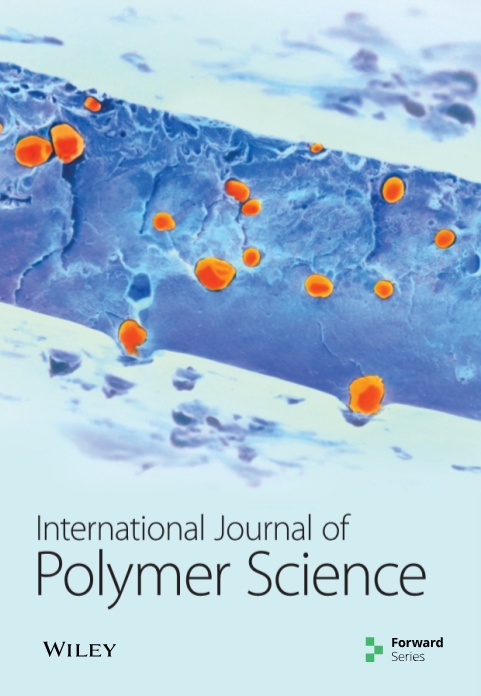The Use of Recycled Polyethylene in Water-Oil Emulsion for Lightweight Concrete
IF 4.4
4区 化学
Q2 POLYMER SCIENCE
引用次数: 0
Abstract
This study was to determine the suitability of recycled waste polyethylene (WPE) processed into water-oil emulsion for lightweight concrete applications. The processed WPE in the form of polyethylene emulsion (PE-e) is to promote physical interaction between the polymeric material and the cementitious matrix. The PE-e used was also to partially replace concrete mix composition by PE-e_1, PE-e_2.5, PE-e_5, and PE-e_10 percents for reference concrete and to introduce plasticity into the mechanical behaviour of the concrete. The PE was processed into PE-e to promote affinity for water, and this hydrophilicity was prominent in PE-e_1 and PE-e_2.5 percent concretes. Concretes with PE-e_1 and PE-e_2.5 percent formed good miscibility with the cementitious matrix. The density of the PE-e concrete decreased to 13.68% with 10% PE-e at 28 days. The replacement of mix constituents of PE-e_1, PE-e_2.5, and PE-e_5 percent induced elastic to plastic behaviour in the concrete coupled with low water absorption. The FTIR data showed characteristic peaks of 3378 cm-1, 1740 cm-1, and 1148 cm-1 in the PE-e. Using optical microscopy, it was shown that the PE particles were homogenously dispersed in the concrete matrix. The study shows the feasibility of using PE-e_1 percent to produce structural lightweight concrete and up to PE-e_10 percent for nonstructural applications mainly for light non-load-bearing partitions.在轻质混凝土水油乳液中使用回收聚乙烯
本研究旨在确定加工成水油乳液的回收废旧聚乙烯(WPE)是否适用于轻质混凝土应用。以聚乙烯乳液(PE-e)形式加工的废旧聚乙烯可促进聚合物材料与水泥基质之间的物理相互作用。所使用的 PE-e 还可部分取代混凝土的混合成分,即 PE-e_1、PE-e_2.5、PE-e_5 和 PE-e_10 百分比的参考混凝土,并在混凝土的机械性能中引入塑性。将聚乙烯加工成 PE-e 可提高亲水性,这种亲水性在 PE-e_1 和 PE-e_2.5% 混凝土中表现突出。含 PE-e_1 和 PE-e_2.5% 的混凝土与水泥基质形成了良好的互溶性。28 天后,10% PE-e 混凝土的密度降至 13.68%。PE-e_1、PE-e_2.5 和 PE-e_5% 的混合物成分替代后,混凝土由弹性变为塑性,同时吸水率较低。傅立叶变换红外光谱数据显示,PE-e 中存在 3378 cm-1、1740 cm-1 和 1148 cm-1 的特征峰。光学显微镜显示,聚乙烯颗粒均匀地分散在混凝土基体中。研究表明,使用 1% 的 PE-e 生产结构性轻质混凝土是可行的,使用最高达 10% 的 PE-e 生产非结构性混凝土也是可行的,主要用于轻质非承重隔墙。
本文章由计算机程序翻译,如有差异,请以英文原文为准。
求助全文
约1分钟内获得全文
求助全文
来源期刊

International Journal of Polymer Science
POLYMER SCIENCE-
CiteScore
6.10
自引率
0.00%
发文量
55
审稿时长
>12 weeks
期刊介绍:
The International Journal of Polymer Science is a peer-reviewed, Open Access journal that publishes original research articles as well as review articles on the chemistry and physics of macromolecules.
 求助内容:
求助内容: 应助结果提醒方式:
应助结果提醒方式:


